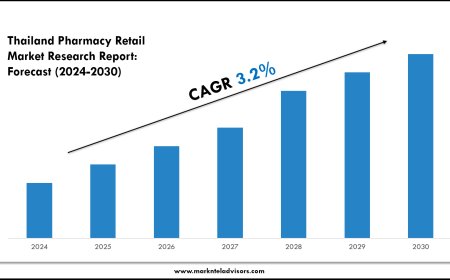Non-Alcoholic Wine | The Perfect Blend of Taste and Wellness
Non-alcoholic wine is made using the same grapes, fermentation processes, and winemaking techniques as traditional wine.

In todays health-conscious world, more people are turning toward mindful drinking habits and exploring alternatives to traditional alcoholic beverages. Among the most refined and enjoyable of these alternatives is non-alcoholic wine. Once considered a niche product, non-alcoholic wine has evolved into a booming category, offering the taste, aroma, and elegance of traditional winewithout the alcohol. From casual dinners and corporate events to weddings and wellness retreats, alcohol-free wines are becoming a staple for modern consumers who want to enjoy lifes celebrations without compromise.
This comprehensive guide delves into the essence of non-alcoholic wine, how it's made, its benefits, the different types available, and why its gaining popularity worldwide.
What is Non-Alcoholic Wine?
Non-alcoholic wine is made using the same grapes, fermentation processes, and winemaking techniques as traditional wine. The key difference is that after fermentation, the alcohol content is removed through specialized methods, reducing it to less than 0.5% alcohol by volume (ABV). This retains the flavor, structure, and complexity of regular wine, while eliminating the intoxicating effects.
It's important to note that non-alcoholic wine is different from grape juice. Grape juice is unfermented, whereas non-alcoholic wine goes through fermentation, giving it the same characteristics as real wine before dealcoholization.
How is Non-Alcoholic Wine Made?
Creating non-alcoholic wine is a delicate and scientific process. Wineries must ensure that flavor and aroma are preserved even after alcohol is removed. The production generally includes the following steps:
Traditional Winemaking Process
The journey begins with selecting high-quality wine grapes such as Cabernet Sauvignon, Chardonnay, Merlot, or Riesling. The grapes are crushed, fermented, and aged just like traditional wine. During fermentation, yeast converts the sugars into alcohol, which is essential for creating depth and complexity.
Dealcoholization Techniques
After the wine reaches maturity, the alcohol is removed using one of several techniques:
-
Vacuum Distillation: Alcohol is removed under low pressure at lower temperatures, preserving flavors and aromas.
-
Reverse Osmosis: The wine is filtered to separate alcohol and water from the flavor compounds. Alcohol is removed, and the flavors are added back into the wine base.
-
Spinning Cone Column: A high-tech method using centrifugal force and low heat to gently extract alcohol while maintaining wine character.
The result is a refined beverage with less than 0.5% ABV, retaining the original wines bouquet, texture, and essence.
Types of Non-Alcoholic Wine
Just like traditional wines, non-alcoholic wines come in a variety of styles to suit every palate and occasion. Heres a breakdown of the most popular types:
Non-Alcoholic Red Wine
Red wines are known for their bold, robust flavors and pair well with meats, pasta, and hearty dishes. Popular varieties include Merlot, Cabernet Sauvignon, and Pinot Noir. These alcohol-free reds offer notes of berries, oak, and spicewithout the after-effects of alcohol.
Non-Alcoholic White Wine
Refreshing and crisp, non-alcoholic white wines are perfect for warm weather, seafood, and light meals. Varieties such as Chardonnay, Sauvignon Blanc, and Riesling offer flavors of citrus, green apple, and tropical fruits.
Non-Alcoholic Ros Wine
Ros is loved for its light, fruity taste and beautiful pink hue. Alcohol-free ros wines offer hints of strawberry, melon, and rose petalsideal for brunches, picnics, and summertime enjoyment.
Non-Alcoholic Sparkling Wine
Perfect for celebrations, sparkling non-alcoholic wine offers effervescence and elegance without the buzz. These are commonly used for toasts at weddings, holidays, or corporate events. Popular versions include sparkling ros and sparkling white.
Benefits of Non-Alcoholic Wine
The rise of non-alcoholic wine is driven not just by taste, but also by the growing awareness of its health and lifestyle benefits.
Health-Friendly Option
Non-alcoholic wines contain fewer calories and no intoxicating effects. They are a great alternative for people managing:
-
Liver health
-
Blood pressure
-
Weight
-
Sleep issues
Some varieties are also rich in antioxidants like resveratrol, which can support heart health.
Safe for All Lifestyles
Non-alcoholic wine is inclusive and caters to:
-
Pregnant women
-
Designated drivers
-
People practicing sobriety
-
Individuals with religious restrictions
It allows everyone to be part of the celebration without compromising their values or responsibilities.
Social and Professional Acceptance
More companies and social venues now serve non-alcoholic wine, promoting a safe and responsible drinking culture. You can network, celebrate, and enjoy fine dining experiences without worrying about alcohols side effects.
No Hangovers
One of the most appreciated perksno morning-after fatigue, dehydration, or nausea. You can enjoy a bottle and wake up fresh and focused.
Top Brands of Non-Alcoholic Wine
As the demand for non-alcoholic wines increases, numerous high-quality brands have emerged globally. Here are some popular names:
-
Leitz Eins Zwei Zero (Germany): Known for its exceptional alcohol-free Riesling and Pinot Noir.
-
Pierre Chavin Zra (France): Offers premium organic, halal-certified wines with 0.0% ABV.
-
Sutter Home Fre (USA): A widely available brand with Chardonnay, Merlot, and sparkling varieties.
-
Thomson & Scott Noughty (UK): Organic sparkling wines with low sugar and calories.
-
Lussory (Spain): Halal-certified non-alcoholic wines with full-bodied flavor.
These brands are often found in non-alcoholic shops, health stores, and online retailers dedicated to zero-proof products.
How to Enjoy Non-Alcoholic Wine
To get the best experience, non-alcoholic wine should be served and enjoyed with the same care as traditional wine:
-
Use Proper Glassware: Red wines in large-bowled glasses, whites in narrower glasses, and sparkling wines in flutes.
-
Serve at the Right Temperature: Reds slightly below room temperature, whites and ros well-chilled, and sparkling wine ice-cold.
-
Pair with Food: Non-alcoholic wines pair well with cheese, meat, pasta, desserts, and more. Choose based on flavor profile and acidity.
-
Store Properly: Keep unopened bottles in a cool, dark place. Once opened, refrigerate and consume within 35 days.
You can also use non-alcoholic wines in mocktails and cooking, adding a layer of flavor to your recipes or elevating your drink menu without adding alcohol.
Where to Buy Non-Alcoholic Wine
You can purchase non-alcoholic wines at:
-
Specialty non-alcoholic shops
-
Health and organic food stores
-
Supermarkets with wellness sections
-
Online retailers like Better Rhodes, Dry Drinker, and Amazon
-
Halal wine suppliers (for religiously appropriate options)
When shopping, look for labels like:
-
0.0% ABV or Alcohol Removed
-
Halal Certified (if applicable)
-
Organic, Vegan, Low Sugar (based on preferences)
Final Thoughts
Non-alcoholic wine is more than a substituteits a celebration of choice, wellness, and elegance. It allows people from all walks of life to enjoy the charm of wine drinking without the health and social downsides of alcohol. Whether you're embracing a sober lifestyle, looking for healthier alternatives, or simply want to expand your palate, non-alcoholic wine offers a rich, inclusive experience.































